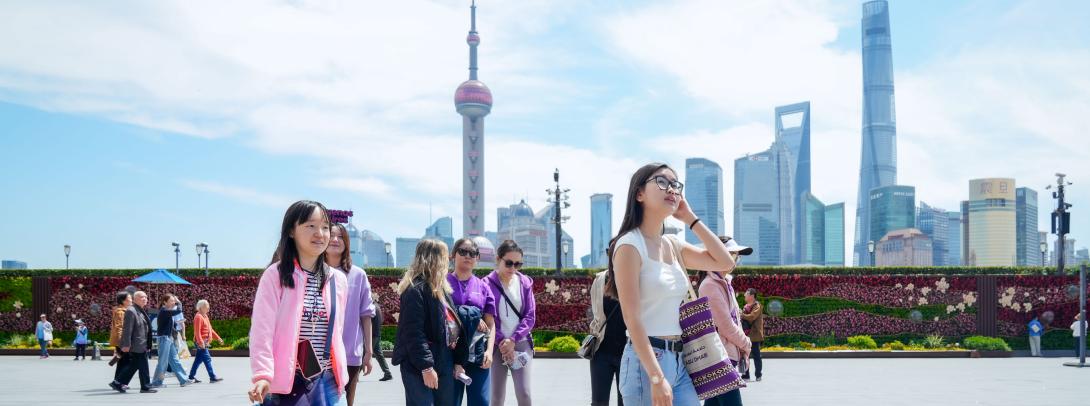Wandering around Shanghai on a recent balmy weekend, you might’ve spotted what looked like typical tour guides leading visitors through the streets of the city. In actuality, they were students giving tours as part of two classes at NYU Shanghai. Students in Experience Studio: Food Stories, taught by Associate Arts Professor of Interactive Media Business (IMB) Emily Tsiang, and Global Connection: Shanghai, taught by Director of the Center for Global Asia and Associate Professor of Global China Studies Lena Scheen, put their knowledge of Shanghai to the test—not in a written exam but through their design and delivery of public-facing tours of Shanghai. The culmination of semester-long research projects into various aspects of Shanghai’s history from food culture to heritage architecture, the student-led tours helped deepen students' and visitors’ knowledge of Shanghai’s history and culture.
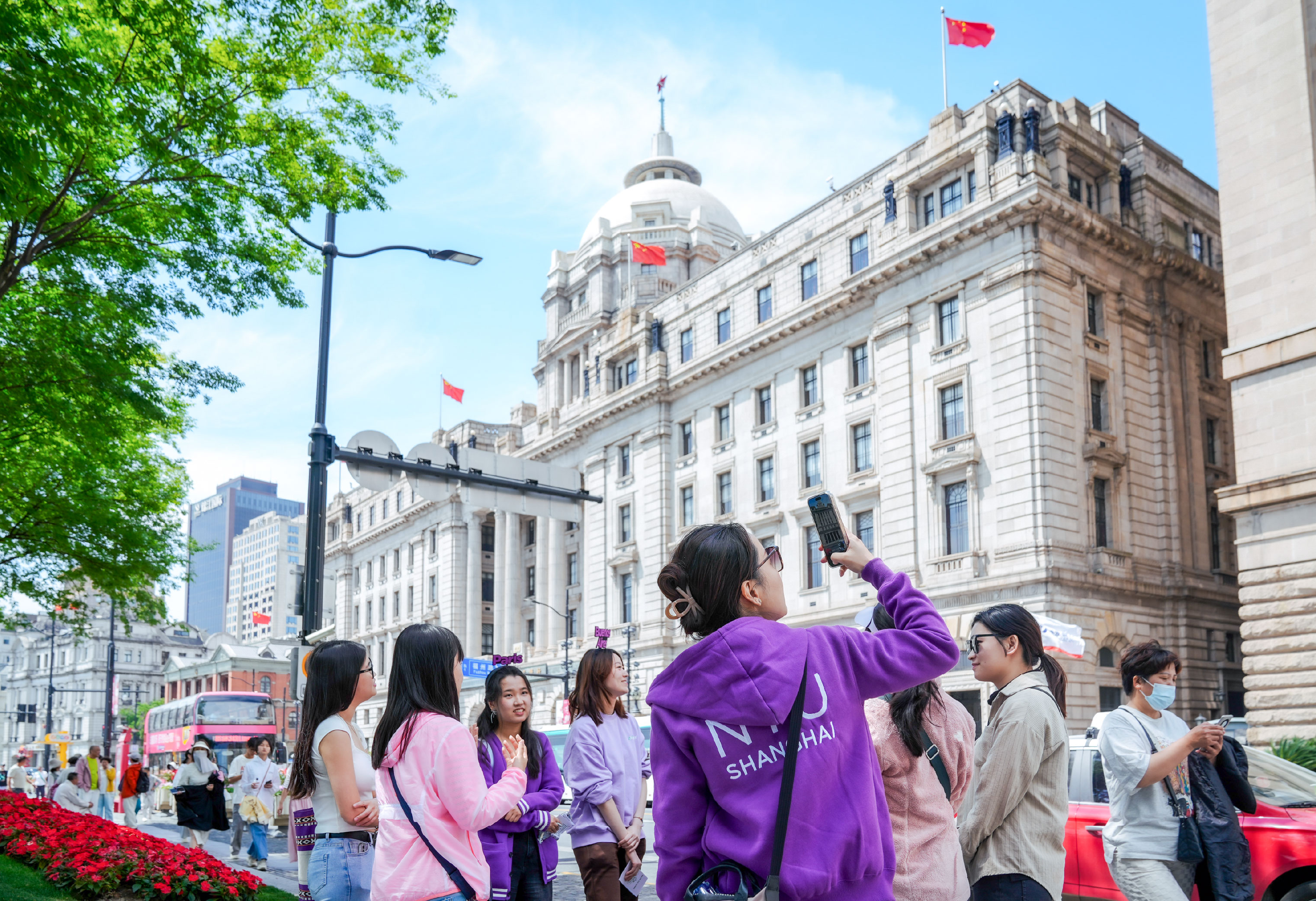
The two courses aim to move students beyond passive, lecture-based classes into interactive experiences in the field. Professors facilitate students’ learning through the cycle of experience, reflection on the experience, reconceptualization of ideas and frames of thinking, and application of knowledge to create another experience. The courses root students’ research directly in Shanghai with the goal of “cultivating a deeper sense of place for students,” says Tsiang. “I want students to leave Shanghai having gone one layer deeper as to how this city came to be,” she said. “I want them to feel connected to the city beyond the superficial.”
In Tsiang’s class, students designed tours connecting food, culture, and history, leading immersive experiences to historic spots in Shanghai, while exploring the impact on the intertwinings of food and history. Narrative storytelling is the bedrock of the tours; students are tasked not just with delivering information about their chosen topic, but weaving a story that guides their audience through the spaces they are visiting. Students honed their tour guiding skills as they developed their designed experiences over the course of the semester. Then, they were put to a final test: delivering their tours to international students visiting NYU Shanghai’s campus for Admitted Students Weekend.
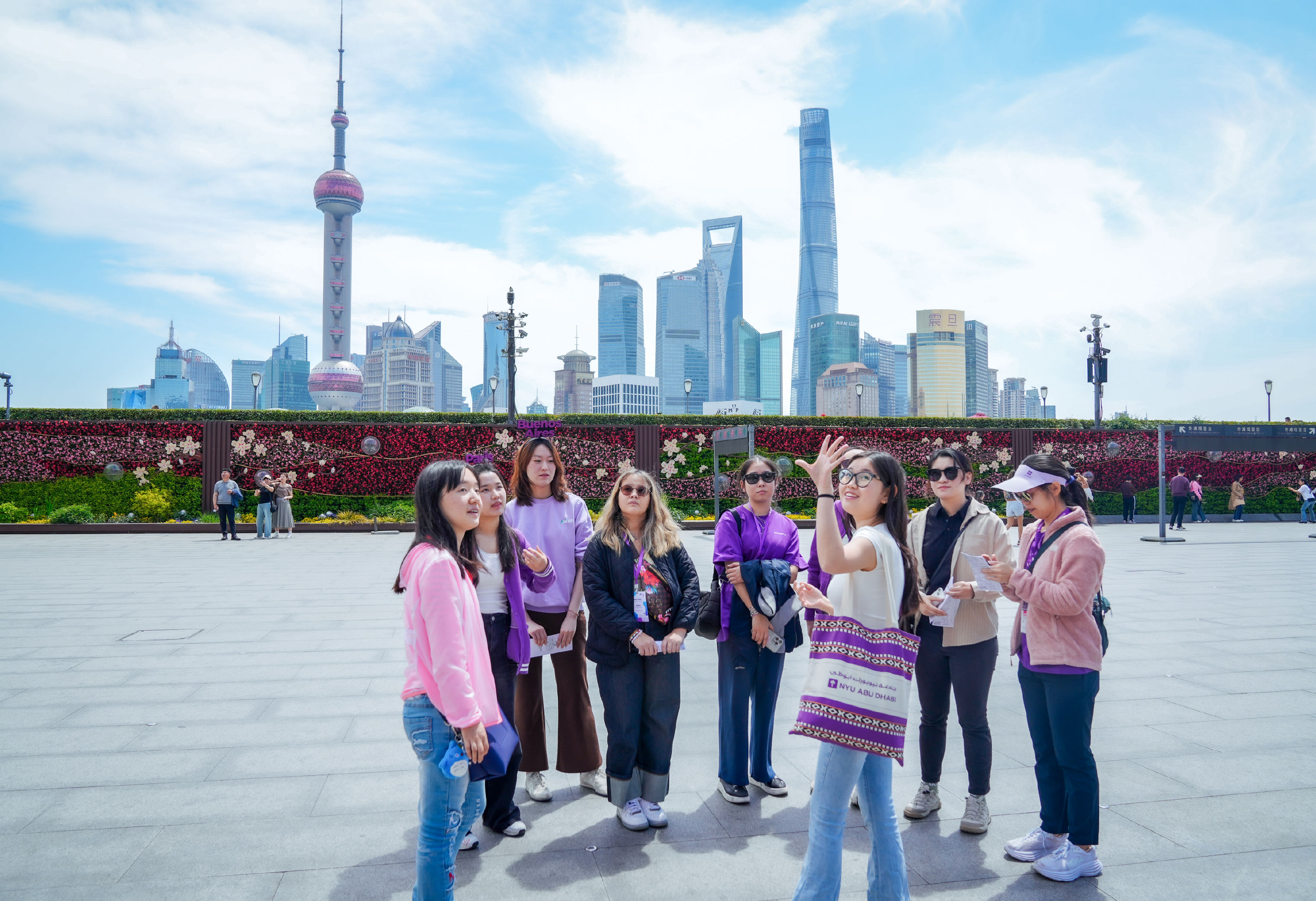
Jackie Huang ’25 and Lulu Fang NYU ’25 led a tour at Longhua Temple showcasing vegetarian food’s connection to Buddhist belief. “I learned more about Longhua Temple and religious practices that are different from my own,” Fang said after giving her tour. “It’s not just about giving information; it’s about being willing to share and being open to differences.” Huang said that after developing the tour, he gained a better understanding of his father’s Buddhist beliefs and vegetarian lifestyle. “I realized it takes a lot of determination and faith to keep on the vegetarian lifestyle,” he said.
Students developed five tours as part of the class. They took visitors to Nanjing Road to explore the influence of migrants from Northern China on Shanghai’s food culture and traced the history of China’s coffee trade through a visit to Shanghai’s first coffeehouse.
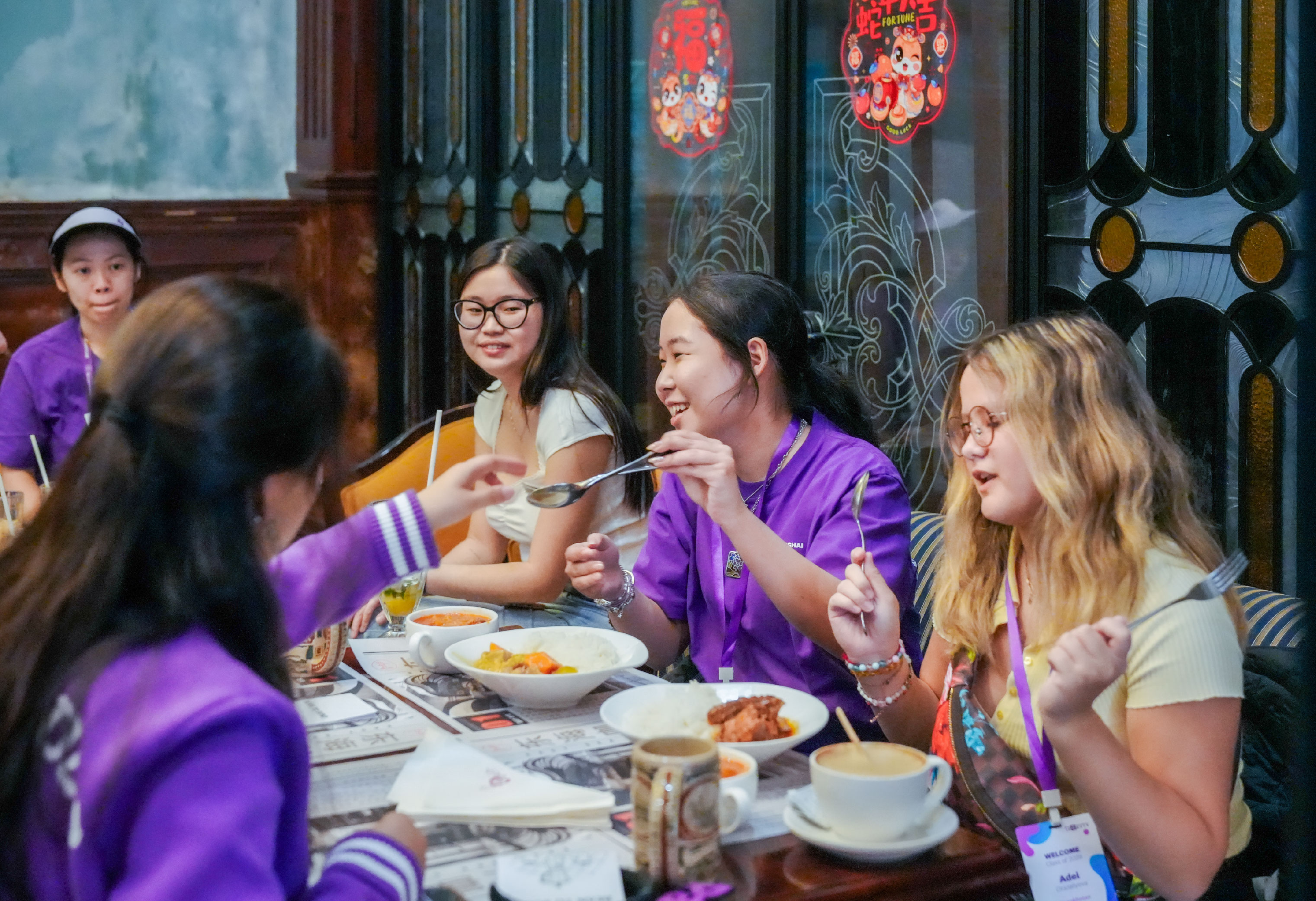
In Scheen’s class, students conducted in-depth research on a building in Shanghai and formulated an argument for how to preserve the building and its architecture while contributing to the city’s development. The final tours, conducted in three small groups for international visitors in Shanghai attending the Symposium on Heritage in the Digital Age, connected buildings thematically and geographically. Scheen said the tours were a way for students to process their learning and share it with others, helping them to capture what is unique about the building they researched. “They become more aware of the value of their own projects,” she said.
Sebastian Zhang ’25, who researched the Bank of China building and led a tour along the Bund, reflected on how the course expanded his understanding of his country’s development. “Learning about Chinese culture and history in Shanghai specifically gives me a clear sense of identity—where I come from and how China came to where it is today,” said Zhang, who is from Beijing.
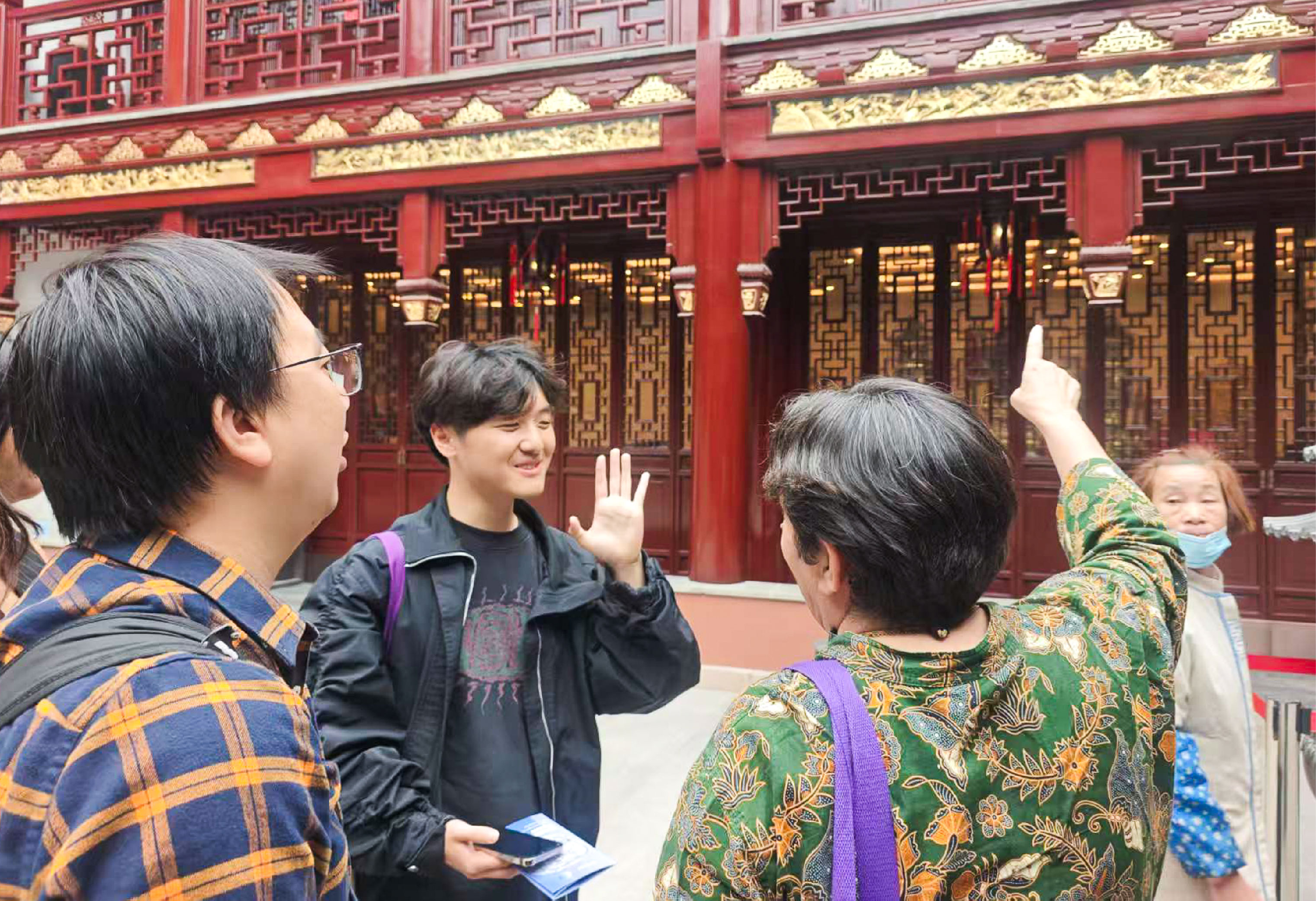
Swechha Karn ’25 said developing the tour changed her relationship with Shanghai. “What this course particularly helped me with was the understanding of what this place really holds,” she said, including the history and symbolism behind famous tourist sites like the Wukang Building and Yu Garden, the focus of her own research. “There's so much more to Shanghai than just pretty buildings that you see in pictures.”
Assistant Professor of Global China Studies Benson Zhou, who attended one of the tours, said he was impressed by how passionate, informative, and well-structured the experience was. “I didn't know the multiple layers and identities in the history of each landmark,” he said. “I was inspired, as a professor, to think about how we can bring our students outside the classroom to experience the culture around us.”
Tsiang and Scheen said incorporating tours as part of their classes was a successful way to incorporate experiential learning in their courses and critical to their pedagogical approach. “We teach this way because learning should be lived and felt,” said Tsiang. “When our students shift from listeners to storytellers, that’s when the true learning comes alive.”


